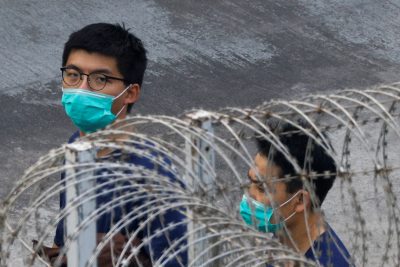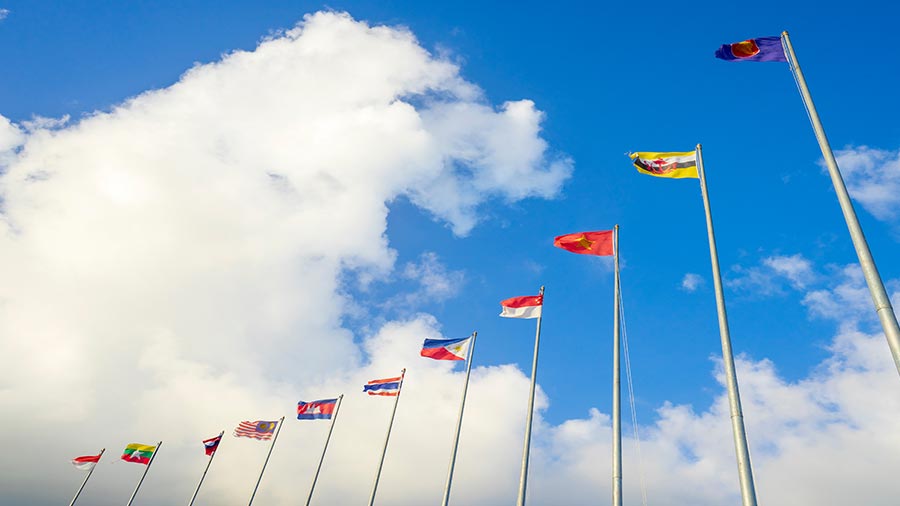China
Hong Kong’s future now lies with China

Author: Tim Summers, Chatham House
The past year and a half has transformed Hong Kong. Following prolonged, intense and often violent protest in 2019, COVID-19 drove activists off the streets in early 2020. This year’s passage of the National Security Law (NSL) by China’s National People’s Congress marked a new political phase. Opposition figures were put on the back foot and the central authorities in Beijing became more engaged in the city’s politics.
A year that began with a major protest march and the burning of HSBC Bank’s lion statues ended with opposition politicians fleeing into exile or facing prison sentences. What exactly has changed in Hong Kong and what are the implications? Two structural shifts stand out.
First, the balance of power within and over Hong Kong. The political momentum gathered by the protest movement weakened the city’s political institutions and from late 2019 Beijing began to fill this vacuum. It supported more restrictive policing of protests, appointed new officials to implement Hong Kong policy and widened its influence on the shaping of the policy environment within which the Hong Kong government operates.
Key to this strategy was the NSL. The boundaries of the crimes it outlaws — secession, subversion, terrorism and collaboration with foreign forces to undermine national security — will only become clear as more cases work their way through the judicial system. But claims that the law criminalises dissent look too simplistic.
Still, before the NSL was enacted it was already clear that Hong Kong’s government would be more assertive in using existing legislation to bring charges against opposition politicians. One consequence is the December imprisonment of political activist Joshua Wong and others on charges — to which they pleaded guilty — of organising an illegal siege of police headquarters in 2019.
Authorities pushed ahead with disqualifications of legislators from the Legislative Council (LegCo) who had been judged not to meet the requirements of conducting politics within the scope of Hong Kong’s Basic Law. The decision by the remaining 15 opposition legislators to resign in sympathy leaves only establishment camp figures to debate legislation.
This offers some space for the government to push forward its agenda in a way not possible since the current dysfunctional LegCo began its term in 2016. But much of the population remains critical of both the Hong Kong and central governments. Elections next autumn — postponed because of the pandemic — will likely show that Hong Kong’s politics remain polarised. Still, the balance of power has shifted in Beijing’s favour.
The second major change is in Hong Kong’s external relationships. Since the announcement of the NSL, Western governments have shifted their positions from concern about developments to strong opposition to the new legislation and to Beijing’s approach to Hong Kong.
Hong Kong’s separate trading status is no longer recognised by the United States and there are some calls for the United Kingdom to follow suit. A number of Western governments have withdrawn from Hong Kong extradition agreements and the United Kingdom announced a ‘pathway to citizenship’ for up to three million holders of British National (Overseas) (BNO) passports. This policy could transform some UK cities as much as it changes Hong Kong.
For all the insistence that the 1984 Sino-British Joint Declaration remains valid, a number of these measures (including the BNO scheme) are inconsistent with what was agreed. Some lobbying in the United Kingdom for foreign non-permanent judges to stand down from Hong Kong’s Court of Final Appeal targets another key feature of the handover settlement. Beijing has long said that the Joint Declaration had already done its job and now it looks like it is losing relevance on both sides.
How will all of this play out? Hong Kong’s political contestation will remain fierce through 2021. All the protagonists strongly believe they have right on their side, with both the Joint Declaration and China’s constitution held aloft to prove debating points. Beijing seems unmoved in the face of international and local pressure. It has geography, history and sovereignty on its side, plus Hong Kong’s economic reliance on mainland China. China’s leaders are willing to stay the course to shape Hong Kong according to their understanding of ‘one country, two systems’.
Political pressure in London is strong, boosted by the Hong Kong activists who chose to go into
Business
Gordonstoun Severs Connections with Business Led by Individual Accused of Espionage for China

Gordonstoun school severed ties with Hampton Group over espionage allegations against chairman Yang Tengbo. He denies involvement and claims to be a victim of political tensions between the UK and China.
Allegations Lead to School’s Decision
Gordonstoun School in Moray has cut ties with Hampton Group International after serious allegations surfaced regarding its chairman, Yang Tengbo, who is accused of being a spy for the Chinese government. Known by the alias "H6," Mr. Tengbo was involved in a deal that aimed to establish five new schools in China affiliated with Gordonstoun. However, the recent allegations compelled the school to terminate their agreement.
Public Denial and Legal Action
In response to the spying claims, Mr. Tengbo publicly revealed his identity, asserting that he has committed no wrongdoing. A close associate of Prince Andrew and a former Gordonstoun student himself, Mr. Tengbo has strenuously denied the accusations, stating that he is a target of the escalating tensions between the UK and China. He has claimed that his mistreatment is politically motivated.
Immigration Challenges and Legal Responses
Yang Tengbo, also known as Chris Yang, has faced additional challenges regarding his immigration status in the UK. After losing an appeal against a ban enacted last year, he reiterated his innocence, condemning media speculation while emphasizing his commitment to clear his name. Gordonstoun, on its part, stated its inability to divulge further details due to legal constraints.
Source : Gordonstoun cuts ties with business chaired by man accused of spying for China
Business
China Dismantles Prominent Uyghur Business Landmark in Xinjiang – Shia Waves

The Chinese government demolished the Rebiya Kadeer Trade Center in Xinjiang, affecting Uyghur culture and commerce, prompting criticism from activists amid concerns over cultural erasure and human rights violations.
Demolition of a Cultural Landmark
The Chinese government recently demolished the Rebiya Kadeer Trade Center in Urumqi, Xinjiang, a vital hub for Uyghur culture and commerce, as reported by VOA. This center, once inhabited by more than 800 predominantly Uyghur-owned businesses, has been deserted since 2009. Authorities forcibly ordered local business owners to vacate the premises before proceeding with the demolition, which took place without any public notice.
Condemnation from Activists
Uyghur rights activists have condemned this demolition, perceiving it as part of China’s broader strategy to undermine Uyghur identity and heritage. The event has sparked heightened international concern regarding China’s policies in Xinjiang, which have been characterized by allegations of mass detentions and cultural suppression, prompting claims of crimes against humanity.
Rebiya Kadeer’s Response
Rebiya Kadeer, the center’s namesake and a notable Uyghur rights advocate, criticized the demolition as a deliberate attempt to erase her legacy. Kadeer, who has been living in exile in the U.S. since her release from imprisonment in 2005, continues to advocate for Uyghur rights. She has expressed that her family members have suffered persecution due to her activism, while the Chinese government has yet to comment on the legal ramifications of the demolition.
Source : China Demolishes Uyghur Business Landmark in Xinjiang – Shia Waves
China
China Expands Nationwide Private Pension Scheme After Two-Year Pilot Program

China’s private pension scheme, previously piloted in 36 cities, will roll out nationwide on December 15, 2024, enabling workers to open tax-deferred accounts. The initiative aims to enhance retirement savings, address aging population challenges, and stimulate financial sector growth.
After a two-year pilot program, China has officially expanded its private pension scheme nationwide. Starting December 15, 2024, workers covered by urban employee basic pension insurance or urban-rural resident basic pension insurance across the country can participate in this supplementary pension scheme. This nationwide rollout represents a significant milestone in China’s efforts to build a comprehensive pension system, addressing the challenges of a rapidly aging population.
On December 12, 2024, the Ministry of Human Resources and Social Security, together with four other departments including the Ministry of Finance, the State Taxation Administration, the Financial Regulatory Administration, and the China Securities Regulatory Commission, announced the nationwide implementation of China’s private pension scheme effective December 15, 2024. The initiative extends eligibility to all workers enrolled in urban employee basic pension insurance or urban-rural resident basic pension insurance.
A notable development is the expansion of tax incentives for private pensions, previously limited to pilot cities, to a national scale. Participants can now enjoy these benefits across China, with government agencies collaborating to ensure seamless implementation and to encourage broad participation through these enhanced incentives.
China first introduced its private pension scheme in November 2022 as a pilot program covering 36 cities and regions, including major hubs like Beijing, Shanghai, Guangzhou, Xi’an, and Chengdu. Under the program, individuals were allowed to open tax-deferred private pension accounts, contributing up to RMB 12,000 (approximately $1,654) annually to invest in a range of retirement products such as bank deposits, mutual funds, commercial pension insurance, and wealth management products.
Read more about China’s private pension pilot program launched two years ago: China Officially Launches New Private Pension Scheme – Who Can Take Part?
The nationwide implementation underscores the Chinese government’s commitment to addressing demographic challenges and promoting economic resilience. By providing tax advantages and expanding access, the scheme aims to incentivize long-term savings and foster greater participation in personal retirement planning.
The reform is expected to catalyze growth in China’s financial and insurance sectors while offering individuals a reliable mechanism to enhance their retirement security.
| This article was first published by China Briefing , which is produced by Dezan Shira & Associates. The firm assists foreign investors throughout Asia from offices across the world, including in in China, Hong Kong, Vietnam, Singapore, and India . Readers may write to info@dezshira.com for more support. |
Read the rest of the original article.






